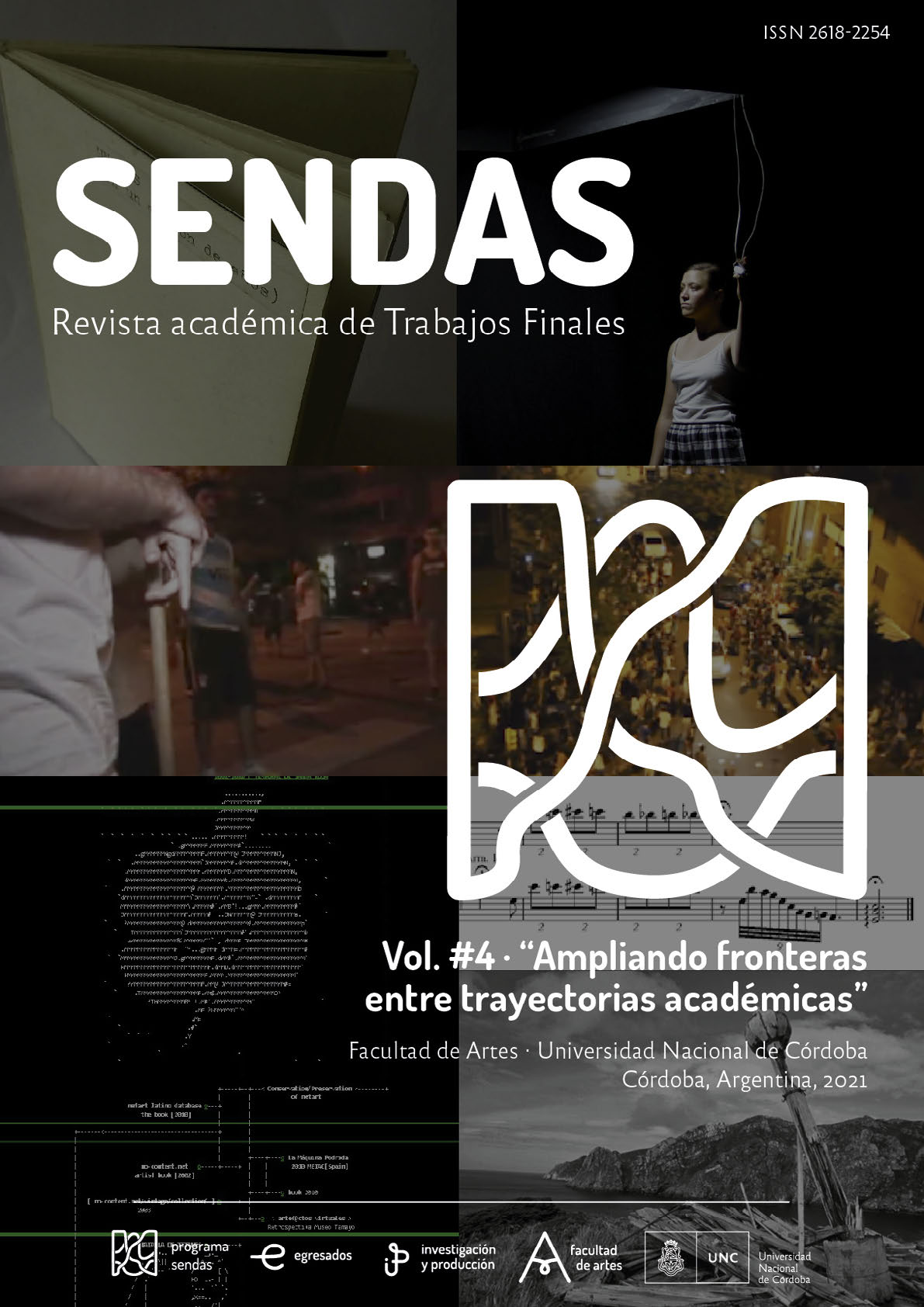Contributions about spaces, otherness and death in contemporary audiovisual
Keywords:
Virtuality, Otherness, Death, Audiovisual, SpatialityAbstract
The proposal of the work is a synthetic journey through the phenomena of spatiality and death as constitutive elements in the relation with another. For this purpose, the audiovisual field was taken as a reference to that space where elements of social, phenomenal, and artistic order are combined and coexist. We can think the analyzes in this work as triggers to reconceptualize and rethink some of these aspects, trying to size possible scopes of these phenomena based on our historical time.
Downloads
References
Arese, L. y Svetko, F. (comps.) (2014). Cine, Política y Derechos Humanos. Córdoba: Ed. Universidad Nacional de Córdoba.
Boyer, E. (2018). El conflicto de las percepciones. Buenos Aires: La Cebra.
Casetti, F. y Di Chio, F. (1991). Cómo analizar un film. Barcelona: Paidós.
Heidegger, M. ([1927]2014). El ser y el tiempo. Buenos Aires: Fondo de Cultura Económica.
Iparraguirre, M. y Berti, A (2014). “Huellas borradas, personas recobradas”. En Arese, L. y Svetko, F. (comps.). Cine, Política y Derechos Humanos. Córdoba: Universidad Nacional de Córdoba.
Jameson, F. (2018). La estética geopolítica. Bueno Aires: Cuenco de plata.
Levinas, E. (2002), Totalidad e infinito (Trad Guillot, D. E.). Salamanca.
Merleau Ponty, M. ([1945] 1994), Fenomenología de la percepción (Trad. Cabanes, J.). Barcelona: Planeta- De Agostini.
Morin, E. (2003), El hombre y la muerte. Barcelona: Kairos.
Sartre, J. P. ([1943] 2013), El ser y la nada. Losada, Buenos Aires.
Simondon, G. (2013), Imaginación e invención. Buenos Aires: Cactus.
Simondon, G. (2015), La individuación a la luz de las nociones de forma y de información. Buenos Aires: Cactus.
Downloads
Published
Issue
Section
License
Copyright (c) 2021 Mateo Berlaffa

This work is licensed under a Creative Commons Attribution-NonCommercial-ShareAlike 4.0 International License.
Commercial use of the original work and any derivative works is not permitted, and distribution of derivative works must be made under a license equal to that which governs the original work.







